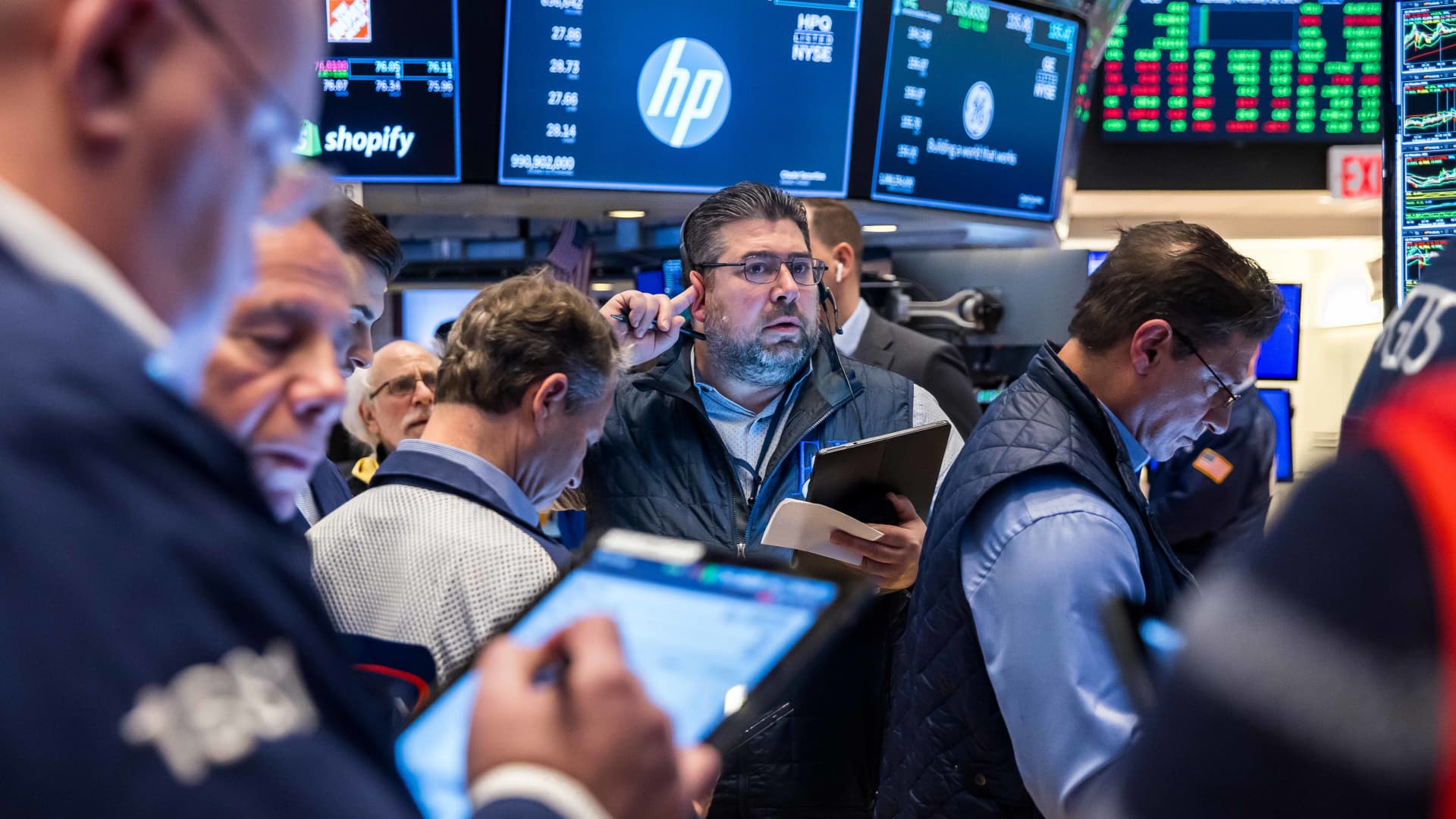
What happened Friday has some on Wall Street worried that a larger pullback has begun. Nvidia , the artificial intelligence beneficiary that’s lifted markets this year with its supercharged advance, ended Friday’s session lower despite reaching an all-time high earlier in the day. The chipmaker lost 5.5% in its worst session since late May, though, to be sure, Nvidia still ended the week more than 6% higher. But some investors are concerned markets could be due for a broader unwind without the help from AI names. As it is, five of the Magnificent Seven names dropped last week, with the exception of Nvidia and Meta Platforms. Apple shares, for example, slid about 5% on the week. Nvidia, which has added more than $1 trillion in market value this year, is responsible for about 30% of the S & P 500’s aggregate gains this year alone, LSEG data shows. That advance has helped the S & P 500 climb for 16 out of 19 weeks, notching record after record in its ascent. The broader index is up more than 7% this year. “Something had to give,” Jonathan Krinsky wrote in a Sunday note. “A consolidation in the AI trade has been overdue for a while now, so Friday’s key reversal day could signal the start of that unwind.” NVDA 5D mountain Nvidia Crowding in AI Indeed, other market observers warned investors the overreliance on AI beneficiaries this year could mean danger for the overall market. “[If] the market is now relying on Nvidia, AMD and other semi names as the foundation now, that is a much more fragile ground because of the major cyclicality of that business,” wrote Peter Boockvar, chief investment officer at Bleakley Financial Group. “In terms of secular growers and linear trends, there was nothing like the industry creating businesses of Google, Apple and for a while Tesla. AI is just a tool, not an industry creating one like the ones here mentioned and semi’s will ALWAYS be a boom and bust business.” Meanwhile, Dubravko Lakos-Bujas, chief global equity strategist at JPMorgan, noted that investors crowding into the few quality mega-cap tech names with strong balance sheets has led to dangerous dislocations in the market. “Given this relationship coupled with very bullish investor sentiment and positioning, we caution investors that this relationship is likely to work in reverse when the AI euphoria peaks,” he wrote in a Sunday note. “While the bull beta of the market to NVDA is significant (as well as for META and AMZN), the bear beta of the market to these stocks is even stronger … which could pose a higher tail risk for the market,” Lakos-Bujas added. More evidence needed To be sure, investors will need to see more evidence of a reversal beyond one day’s trading, BTIG’s Krinsky said. Wall Street will need to see if this year’s underperforming sectors can pick up the slack if the mega-cap stocks start to falter, or if the broader market will fall in tandem with this year’s market leaders. On that front, there’s been some good news for investors. Notably, the small-cap Russell 2000 outperformed last week, closing it out slightly higher, while the S & P 500 posted losses, signaling that gains could be extending across the asset universe. On Monday, however, the Russell 2000 lagged the major benchmarks. “The equally-weighted S & P 500 and the Value Line Index both made new highs last week, ending long streaks of indifference and speaking to the idea that there is more to do in this market than just relying on the largest stocks,” Chris Verrone, head of technical and macro research at Strategas, wrote in a Monday note. Meanwhile, Goldman Sachs traders on Sunday wrote they are “structurally, still (very) Bullish” on the market, even if they are “tactically ”nervous'” about the near-term setup. BTIG’s Krinsky himself said he expects the risk is to to the downside, at least in the near term. On Monday, at least, all major benchmarks were last on track for a losing day. He advised investors to hide out in low volatility stocks. “[The] argument against a broad rotation is that correlations are at all-time lows back to 2006. Therefore, if correlations are poised to rise, that suggests a more broad-based selloff may be near,” Krinsky wrote. “While March came in strong like a bull, perhaps it will leave more like a bear, at least in the short-term.” — CNBC’s Samantha Subin contributed to this report.
